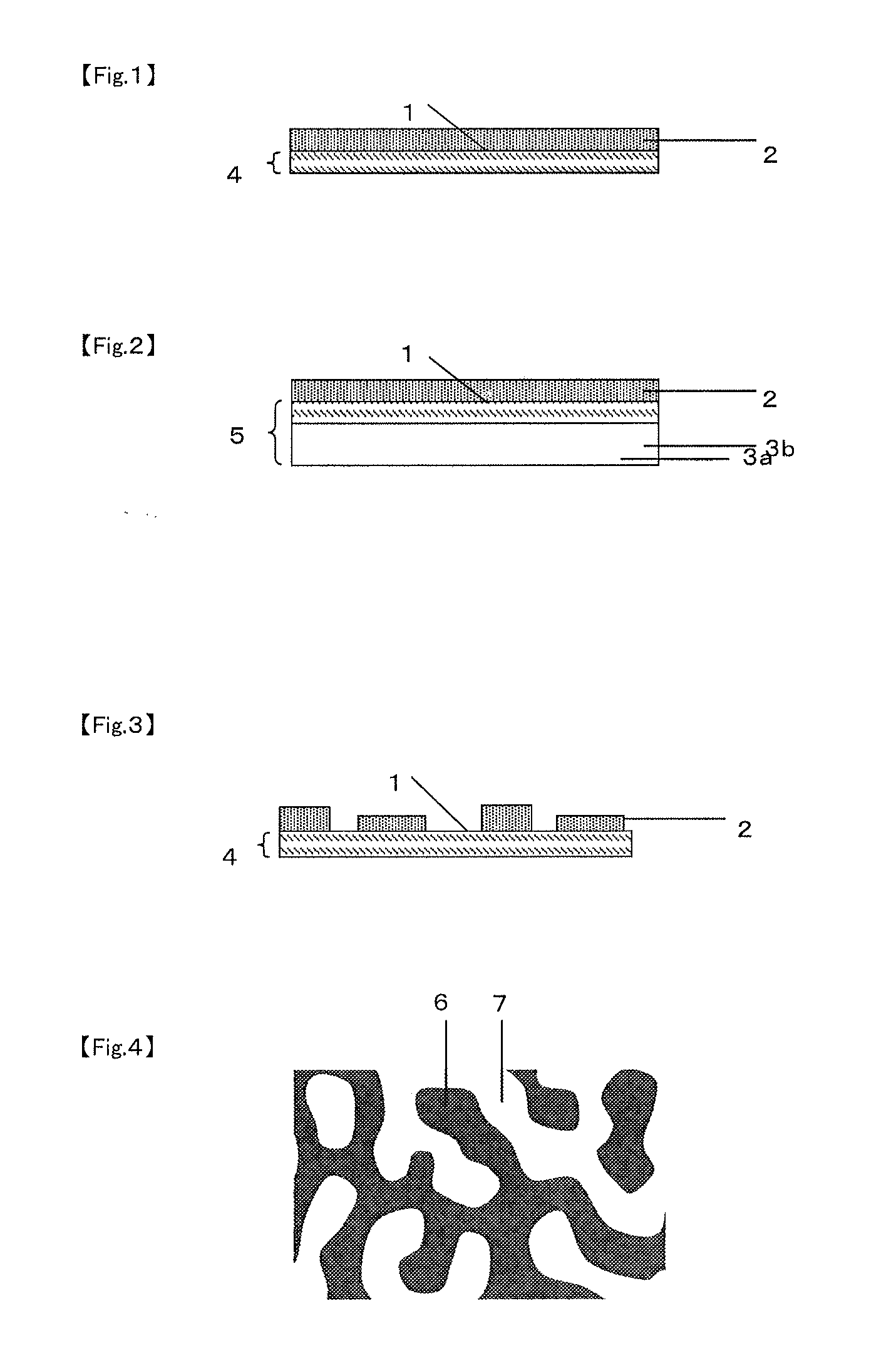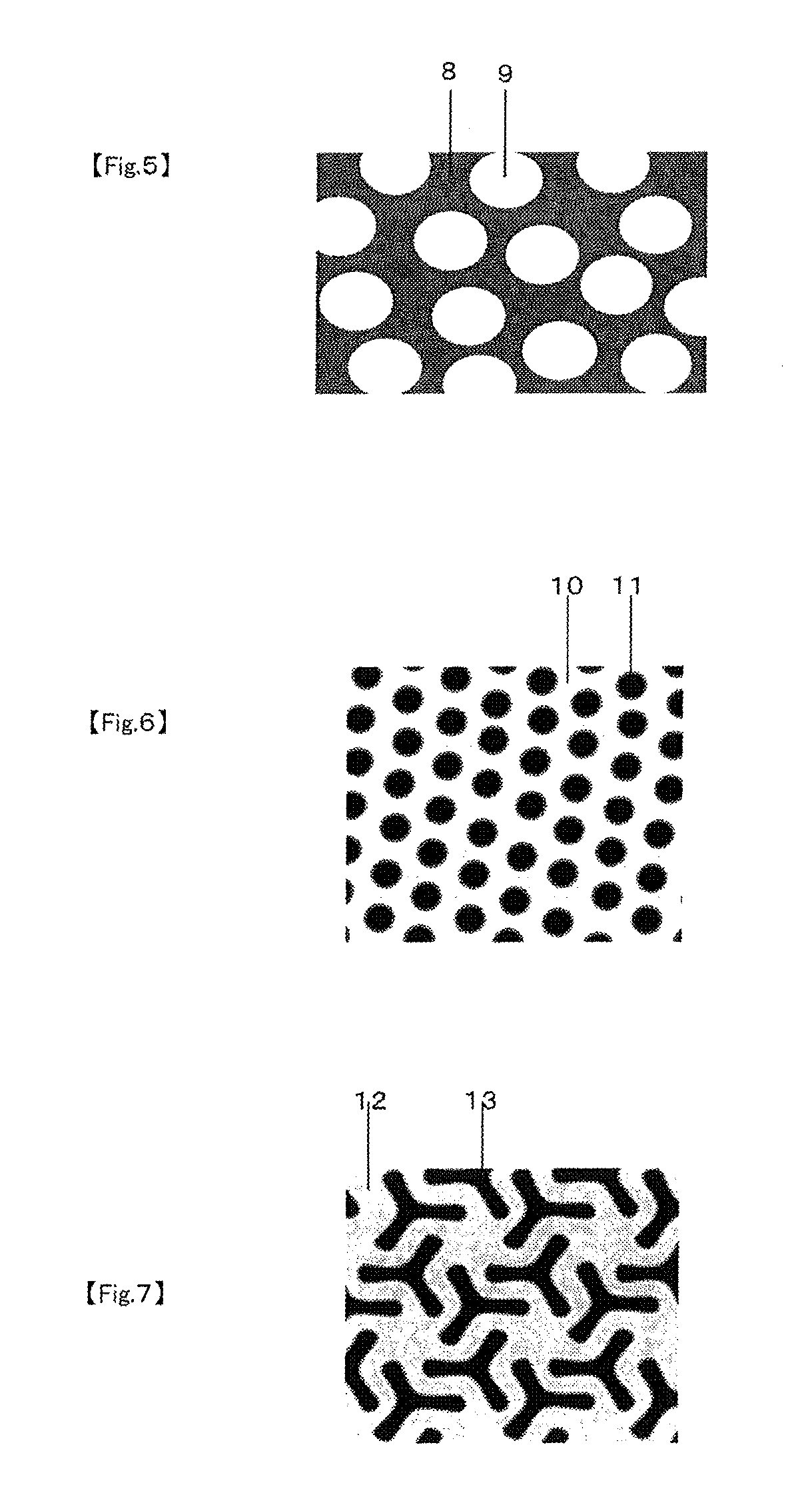Sheet, inorganic-substance-laminated sheet and electronic device using same
- Summary
- Abstract
- Description
- Claims
- Application Information
AI Technical Summary
Benefits of technology
Problems solved by technology
Method used
Image
Examples
example a1
Formation of Sheet (i)
[0132]Methyl methacrylate and polystyrene adopted as components for sheet formation were mixed at a ratio of 90 / 10 [mass ratio] and azobisisobutyronitrile adopted as thermal polymerization initiator was added in an amount of 0.5 mass % relative to methyl methacrylate, thereby preparing a composition for sheet formation. Here, the expression “added in an amount of 0.5 mass % relative to methyl methacrylate” means that the initiator added accounted for 0.5 mass % relative to the total quantity, which accounted for 100 mass %, of the methyl methacrylate component used for sheet formation. More specifically, the ratio among methyl methacrylate, polystyrene, and azobisisobutyronitrile was 90 / 10 / 0.5*[mass ratio](*0.5 was calculated as 0.5×90 / 100). This notation also applies hereinafter.
[0133]Subsequently, the composition for sheet formation was heated at 80° C. for 60 minutes to perform polymerization, thereby forming a sheet with a thickness of 50 μm. The resulting ...
example a2
Formation of Sheet (i)
[0137]Methyl methacrylate and polystyrene adopted as components for sheet formation were mixed at a ratio [mass ratio] of 85 / 15 and azobisisobutyronitrile was added as thermal polymerization initiator in an amount of 0.5 mass % relative to methyl methacrylate, thereby preparing a composition for sheet formation.
[0138]Subsequently, the composition for sheet formation was heated at 80° C. for 60 minutes to perform polymerization, thereby forming a sheet with a thickness of 50 μm. The resulting sheet was a monolayer sheet (sheet (i)). Sheet (i) obtained above, which was free of crosslinked components, was produced from components in a non-mutually dissolved state and had a sea-island type phase-separated structure with a structural period of 54 μm.
(Formation of Inorganic Substance Layer)
[0139]The same procedure as in Example A1 was carried out to produce an inorganic substance layer of a silicon compound with a layer thickness of 100 nm on sheet (i).
(Inorganic Sub...
example a3
Formation of Sheet (i)
[0141]Methyl methacrylate and polystyrene adopted as components for sheet formation were mixed at a ratio of 80 / 20 [mass ratio] and azobisisobutyronitrile was added as thermal polymerization initiator in an amount of 0.5 mass % relative to methyl methacrylate, thereby preparing a composition for sheet formation.
[0142]Subsequently, the composition for sheet formation was heated at 80° C. for 60 minutes to perform polymerization, thereby forming a sheet with a thickness of 50 μm. The resulting sheet was a monolayer sheet (sheet (i)). Sheet (i) obtained above, which was free of crosslinked components, was produced from components in a non-mutually dissolved state and had a sea-island type phase-separated structure with a structural period of 45 μm.
(Formation of Inorganic Substance Layer)
[0143]The same procedure as in Example A1 was carried out to produce an inorganic substance layer of a silicon compound with a layer thickness of 100 nm on sheet (i).
(Inorganic Sub...
PUM
| Property | Measurement | Unit |
|---|---|---|
| Length | aaaaa | aaaaa |
| Length | aaaaa | aaaaa |
| Length | aaaaa | aaaaa |
Abstract
Description
Claims
Application Information
 Login to View More
Login to View More - R&D
- Intellectual Property
- Life Sciences
- Materials
- Tech Scout
- Unparalleled Data Quality
- Higher Quality Content
- 60% Fewer Hallucinations
Browse by: Latest US Patents, China's latest patents, Technical Efficacy Thesaurus, Application Domain, Technology Topic, Popular Technical Reports.
© 2025 PatSnap. All rights reserved.Legal|Privacy policy|Modern Slavery Act Transparency Statement|Sitemap|About US| Contact US: help@patsnap.com



